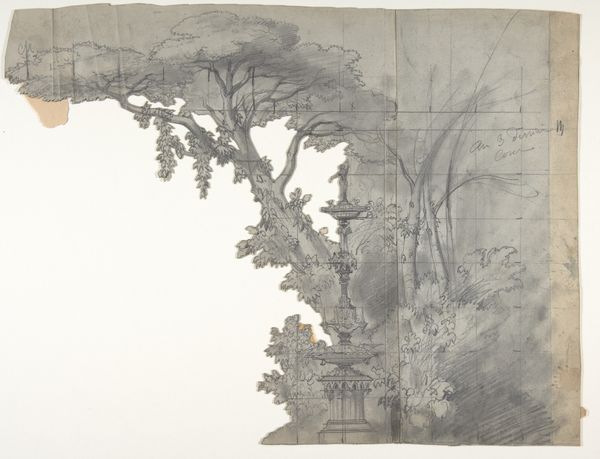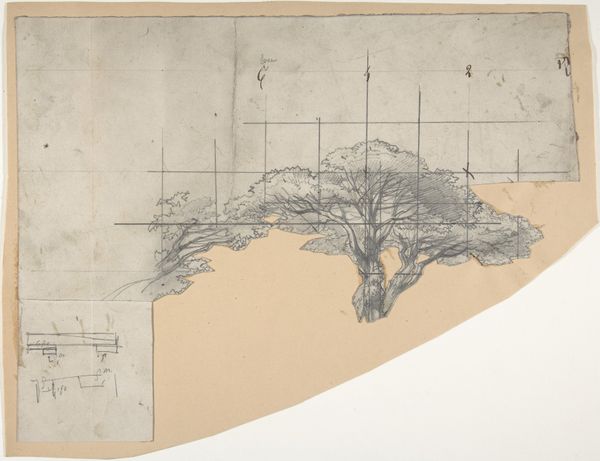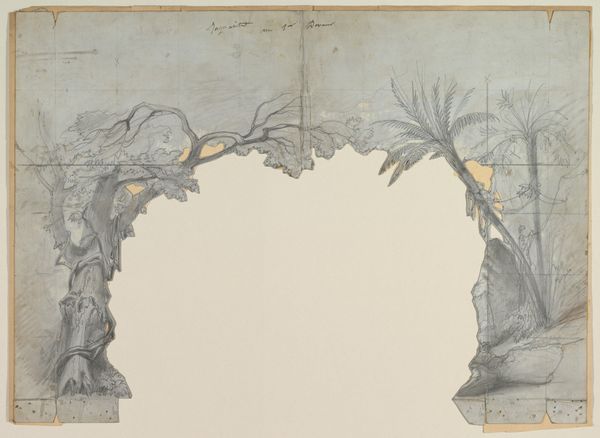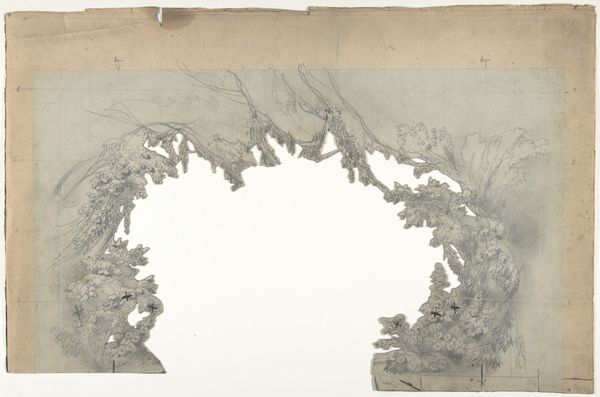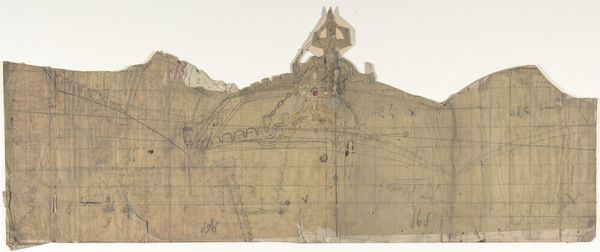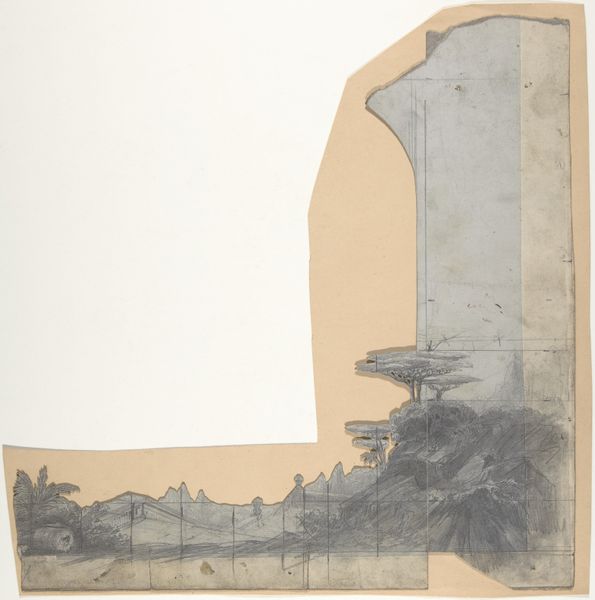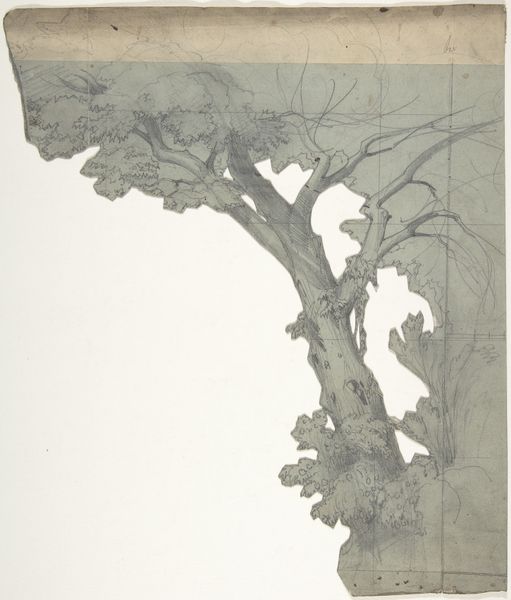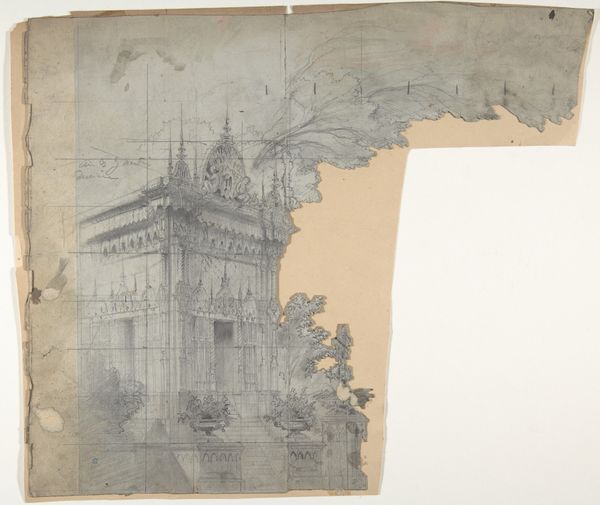
Design for a Stage Set at the Opéra, Paris 1830 - 1890
0:00
0:00
drawing, print, paper, pencil
#
drawing
# print
#
landscape
#
paper
#
pencil
#
cityscape
Dimensions: Irregular sheet: 11 15/16 x 12 13/16 in. (30.4 x 32.5 cm)
Copyright: Public Domain
Curator: This is Eugène Cicéri's "Design for a Stage Set at the Opéra, Paris," a pencil and ink drawing on paper, created sometime between 1830 and 1890. Editor: It's fragmentary, isn't it? Visually, it feels like a memory, delicate and slightly faded, like a dream barely recalled. Curator: Yes, it is just a fragment! Cicéri was known for these meticulously detailed set designs, contributing greatly to the spectacle of Parisian opera. Consider the dome; it’s almost Byzantine in its opulence. What could it symbolize within the opera's narrative? Royal power, perhaps, or even divine authority? Editor: Perhaps both. It seems to me that architecture and nature coexist, separated by only an arch that marks civilization, but also evokes its potential artifice. In terms of class politics, opera has often catered to a wealthier demographic, so how might this drawing also reflect the socioeconomic divides inherent in Parisian society during that period? Curator: That's a sharp reading! Operas of this era often reinforced social hierarchies, using visual grandeur to impress upon the audience the power of the elite. The meticulously drawn dome set against the sketchier foliage... Is there something about idealized civilization against an implicit wildness? What cultural messages are embedded in how nature and the city are represented here? Editor: Exactly. There's a push-pull. Nature is rendered in the background of the city, but also feels dominated. It reminds me of discourses around colonialism present then. I’m curious about how gender dynamics might play out on the stage this set design creates, especially regarding female performers. Were the spaces constricting, expansive, or liberating? What narratives do these environments enforce? Curator: Those are fantastic considerations. To me, the set is reminiscent of older visual languages, from gothic pointed arches to ancient temple cupolas and classical architecture. One element does not triumph over the other, they speak together... I'm curious how audiences at the time might interpret it. Editor: To be honest, reflecting on all of that, and now, I am even more curious to imagine it performed. Curator: Indeed. The drawing offers a glimpse into a world designed to provoke awe. Editor: Yes, a crafted vision shaped by artistic and societal influences.
Comments
No comments
Be the first to comment and join the conversation on the ultimate creative platform.
